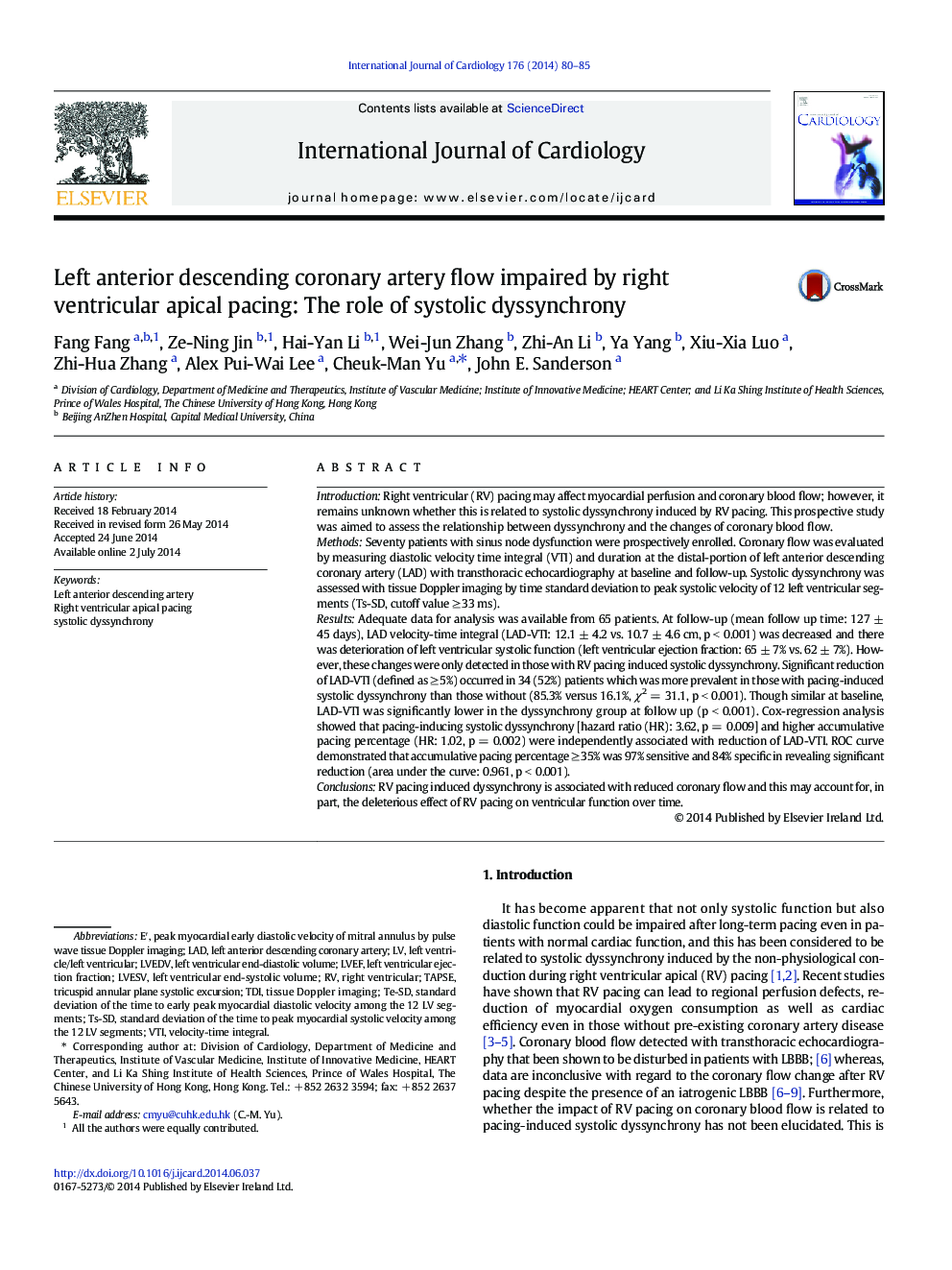| Article ID | Journal | Published Year | Pages | File Type |
|---|---|---|---|---|
| 5970648 | International Journal of Cardiology | 2014 | 6 Pages |
IntroductionRight ventricular (RV) pacing may affect myocardial perfusion and coronary blood flow; however, it remains unknown whether this is related to systolic dyssynchrony induced by RV pacing. This prospective study was aimed to assess the relationship between dyssynchrony and the changes of coronary blood flow.MethodsSeventy patients with sinus node dysfunction were prospectively enrolled. Coronary flow was evaluated by measuring diastolic velocity time integral (VTI) and duration at the distal-portion of left anterior descending coronary artery (LAD) with transthoracic echocardiography at baseline and follow-up. Systolic dyssynchrony was assessed with tissue Doppler imaging by time standard deviation to peak systolic velocity of 12 left ventricular segments (Ts-SD, cutoff value â¥Â 33 ms).ResultsAdequate data for analysis was available from 65 patients. At follow-up (mean follow up time: 127 ± 45 days), LAD velocity-time integral (LAD-VTI: 12.1 ± 4.2 vs. 10.7 ± 4.6 cm, p < 0.001) was decreased and there was deterioration of left ventricular systolic function (left ventricular ejection fraction: 65 ± 7% vs. 62 ± 7%). However, these changes were only detected in those with RV pacing induced systolic dyssynchrony. Significant reduction of LAD-VTI (defined as â¥Â 5%) occurred in 34 (52%) patients which was more prevalent in those with pacing-induced systolic dyssynchrony than those without (85.3% versus 16.1%, Ï2 = 31.1, p < 0.001). Though similar at baseline, LAD-VTI was significantly lower in the dyssynchrony group at follow up (p < 0.001). Cox-regression analysis showed that pacing-inducing systolic dyssynchrony [hazard ratio (HR): 3.62, p = 0.009] and higher accumulative pacing percentage (HR: 1.02, p = 0.002) were independently associated with reduction of LAD-VTI. ROC curve demonstrated that accumulative pacing percentage â¥Â 35% was 97% sensitive and 84% specific in revealing significant reduction (area under the curve: 0.961, p < 0.001).ConclusionsRV pacing induced dyssynchrony is associated with reduced coronary flow and this may account for, in part, the deleterious effect of RV pacing on ventricular function over time.
